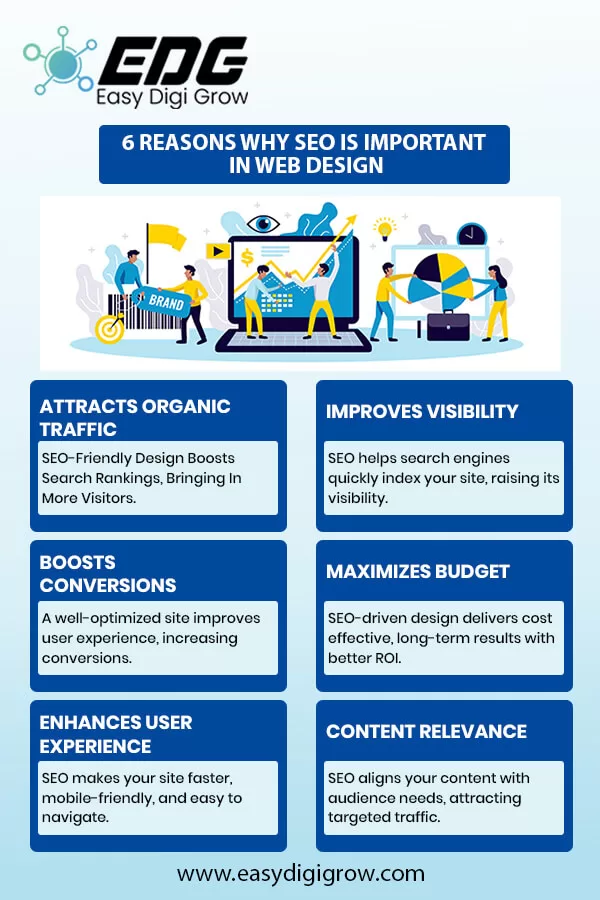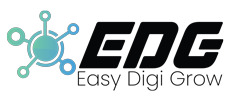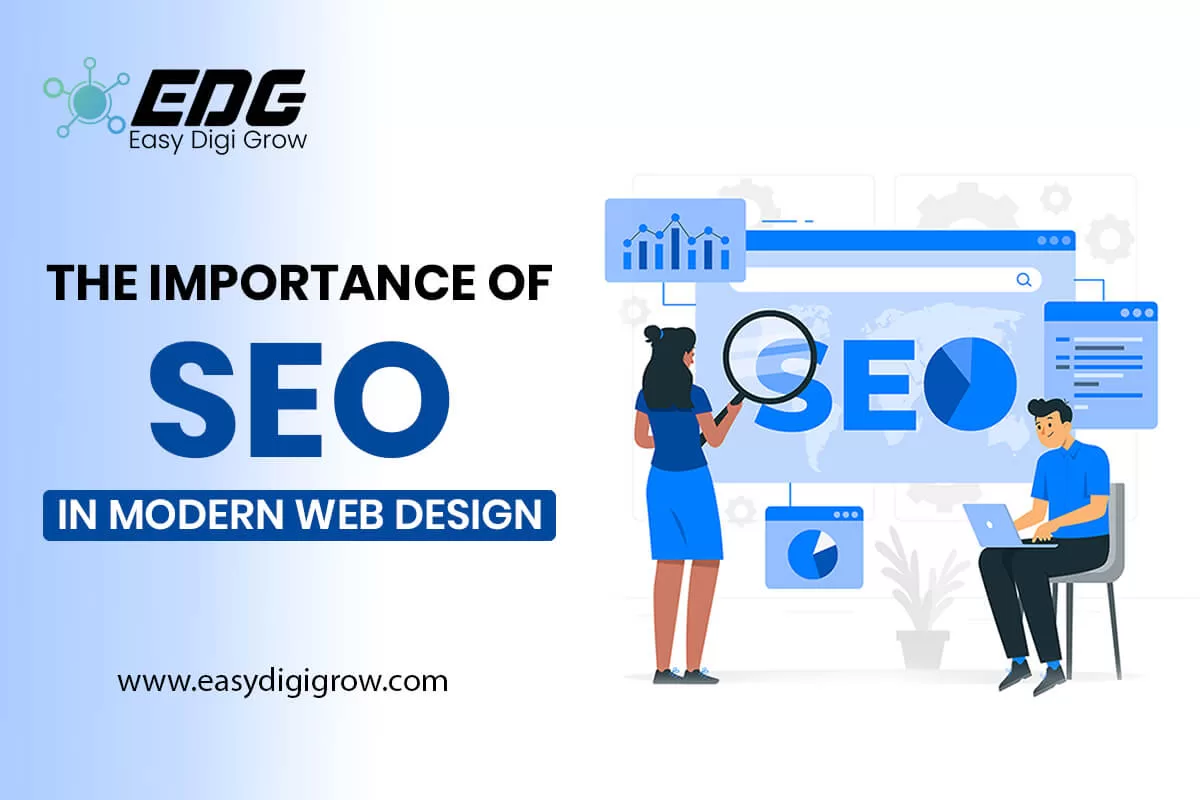In today’s digital age, a website is the first point of contact between a company and its potential clients. Accordingly, a well-designed website is needed for search engines to find it. Here’s where search engine optimization (SEO) comes into play.Combining web design and SEO means that your website is visually appealing and easily searchable through search engines like Google. Businesses that use SEO for web design gain from increased rankings, traffic, and conversions. In this blog, we’ll explore the role of SEO in current web design and how it affects the future of online success.
What is SEO?
SEO (Search Engine Optimization) makes a website more visible in search engine results pages (SERPs). The goal is to enhance organic traffic to your website by optimizing several factors, including off-page and on-page. SEO comprises all approaches and methods for improving search engine ranks, such as keyword optimization, link development, website speed, and so on.
How Search Engines Work
Search engines like Google use bots, or crawlers, to index and analyze websites. These bots scan a website’s content, structure, and coding to determine how relevant it is to specific search queries.
The Role of Algorithms
Search engines use highly complex algorithms to rank websites. These algorithms identify factors like keyword density, backlink profiles, site structure, and user experience to ensure that the visitor gets the best results. SEO services optimize websites for such algorithms, thereby increasing ranks.
What is SEO web design?
SEO web design involves incorporating SEO methods into the process of making a website. It ensures that a website is optimized from scratch. This entails optimizing both the technical components and the content of the website to increase its visibility on search engines.
An efficient web design business ensures that all aspects of the site, including style, structure, and content, follow SEO requirements. Prioritizing SEO in web design could significantly enhance the speed of any website, whether new or updated.
The Pillars of SEO
SEO is a very complex concept, which lies on three basic pillars: Technical SEO, On-page SEO, and Off-page SEO.
Technical SEO
Technical SEO entails optimizing a website’s backend for search engine crawling and indexing. This involves optimizing the code, reducing page load times, making the website mobile-friendly, and implementing HTTPS security features.
On-page SEO
On-page SEO entails improving the text and HTML source code of a web page. It covers tactics like keyword optimization, meta description improvement, the use of relevant header tags, and improving overall content readability. A well-structured website design company will guarantee that these features are included from the outset.
Off-page SEO
Off-page SEO focuses on external elements that influence your website ranking. Some of the successful off-page SEO elements include effective backlinks, social media marketing, and influencing influencers. All these create positive outcomes for your website as regards authority and trustworthiness in search results pages.
Why is SEO Important in Web Design?
In this digital world having a website that looks good isn’t enough. Your website needs to be easy for search engines like Google to find if you want to do well online. Nowadays, SEO (Search Engine Optimization) is an important part of web design. Implementing SEO during the design phase can help your website not only look good but also rank higher in search results, bringing in more visitors and possible customers. Let’s look at why SEO is so important in web design.
SEO web design drives more organic traffic.
Integrating SEO in web design drives organic traffic, critical for business growth. SEO optimization helps your website rank higher in search results, getting more people without relying on paid adverts.
SEO web design leads to more conversions.
A website that is SEO-optimized not only attracts visitors but also converts them into buyers. SEO-driven websites deliver a better experience that boosts conversions by increasing site speed, simplifying navigation, and tailoring content to user intent.
SEO Web Design Improves User Experience
Search engines prioritize websites that provide an excellent user experience. An effective SEO expert would prioritize factors like quick loading times, mobile compatibility, and intuitive design, all of which contribute to a better user experience and higher ranks.
SEO Web Design makes your website search engine friendly
An SEO web design allows search engines to simply crawl and index your website. This includes technical concerns such as structured data, clear sitemaps, and clean URLs, which help search engines comprehend and rank your website successfully.
It helps you make the most of your marketing budget
SEO is a cost-effective technique to market your website. Unlike paid advertising, which requires ongoing investment, SEO marketing produces long-term results. By including SEO during the website development phase, you save money by preventing future redesigns and re-optimizations.
The Role of Content
Content is king in the SEO industry, and incorporating SEO in web design entails developing a framework that supports SEO-friendly content. Whether it’s blog entries, landing pages, or product descriptions, every content should be optimized with keywords, internal links, and metadata.
SEO Impact on Web Design
SEO optimization has a direct influence on how websites are developed today. The top web design companies understand that every component of the site, from layout to structure, affects SEO. For example, image optimization, page speed, and mobile responsiveness are all important aspects in determining how search engines rank your website. When you hire an SEO company or a web design agency, they make certain that the website’s design and content work together to boost its search engine rankings.
Best Practices for Integrating SEO in Web Design
- Mobile Responsiveness: Ensure full mobile responsiveness of the website to be able to benefit from Google’s mobile-first indexing.
- Page Speed: Ensure your site loads quickly by optimizing images and hosting your site with a reliable host.
- Use of keywords: Use relevant keywords naturally in your content, headings, and meta tags to help your site appear higher in search results.
- Clear Navigation: Ensure a user-friendly design with easy-to-follow navigation that helps both users and search engines.
The Future of SEO in Web Design
As algorithms get more complex, incorporating SEO into web design will become increasingly vital. Emerging technologies such as AI and voice search are already influencing the future of SEO services. Websites created with flexibility and SEO in mind will be better able to handle these changes. Furthermore, as search engines continue to prioritize user experience, the relationship between web design and SEO optimization will become much stronger.

Conclusion
In today’s competitive digital market, SEO and web design are critical to online success. Implementing SEO principles into your website design helps both its appearance and its search engine ranking. Whether you work with an SEO agency, a web design agency, or do it yourself, prioritizing SEO in web design will result in long-term benefits such as more traffic, a better user experience, and higher conversion rates. Investing in SEO from the outset is one of the most effective ways to future-proof your online presence and stay ahead in the digital game.
 seolounge
seolounge


